How about review-rules? Read it here: „reviews, tests & hands-ons“
There are several possibilities to trigger strobes (studio strobes and speedlights): via cable, infrared, via slave cell or radio. Without doubt radio is the most convenient and practical one. You can get lots of different devices for that purpose nowadays, in different classes of price and function. Over the years the equipment of the „PocketWizard“-brand have developed into an almost-standard among the photo industry.
The devices are rugged, easy to use, got a big range and reliability and are powered by AA-batteries which are easy to get practically everywhere (this applies to all models but the new TTL-capable ones anyway). Above that they are very versatile as they can even trigger cameras (with special cables). However, they also are damned expensive (THIS also applies to the latest ones).
Last year, however, I’ve heard about a competitor’s product, which should unite the same features with a far lower price: the Phottix Atlas. At Photokina I had the oppotunity to get in contact with the Chairman of the company. A while after that I got my review samples of the „Atlas“-transceivers (CE version) send from the official german distributor MeinFoto (www.MeinFoto.com). Thanks again for that!
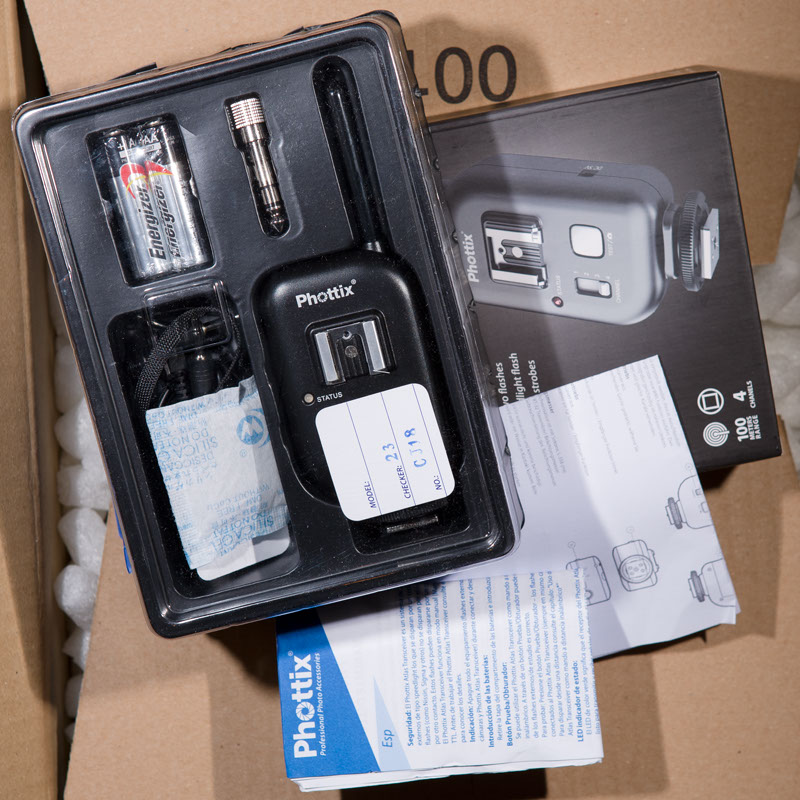
The special thing about the Atlas: They not only are looking very similar to the proved and tested Pocket Wizard Plus II-devices. No, they operate on the same frequencies, are said to have at least the same working distance and are compatible with the (classic) Pocket Wizards as well. In addition they have a hot shoe on which you can put flashguns on. All of this comes for a price for which you would hardly get half a device of the originals. This makes the products very interesting, but evokes some sceptisicm as well.
compatibility/ interoperability
The propably most interesting and important point for most of you should be resolved right now: Are the Atlas really PocketWizard compatible? – Yes, they are! I tested this with my Sekonic L-758DR, which got a (original) PocketWizard-transmitter built in. It triggers the Atlas, too, without any limitations. You can use the same 4 channels like with the Plus II.
PocketWizard-checklist item 1: compatibility / interoperability – passed!
As I already mentioned the Atlas are „transceivers“, just as the popular rolemodel is. So one piece can operate as transmitter or receiver – whichever you choose. This is useful, as you can e.g. trigger 2 flashes (with the third device on the camera) or trigger the same flash with two different camera bodies – all with the same radio devices . The most important pro with this is however that you only got one type of device, so you just have to know one type of controls which simplifies the use in the field.
It’s not necessary (or possible) to choose the operating mode as it is recognized automatically.
PocketWizard-checklist item 2: transceiver – passed!
The Plus II use two standard AA-batteries – as do the Atlas. With the latter you even get them in the package (I’m not speaking of some chep third-party ones but high-quality Energizers). The batteries last very long in the devices – I’ve not swapped a single one since the beginning. The battery compartement door by the way, though not built like a tank, does not appear to be too fiddly or fragile to me.
In addition there’s a little socket on the side, which can be used to power the Atlas by DC (not tested this).
PocketWizard-checklist item 3: AA-power supply – passed!
Like with most radio triggers, you got two possibilities to use the Phottix as a transmitter. The first is to use it on the hot shoe of your camera. The socket of the Atlas is thereby made of metal, which even is an approvement compared to the PWs. On of my flashguns is broken on that exact point (the socket is still made of plastic there). However, the Atlas‘ connection from socket to body is made of plastic again.
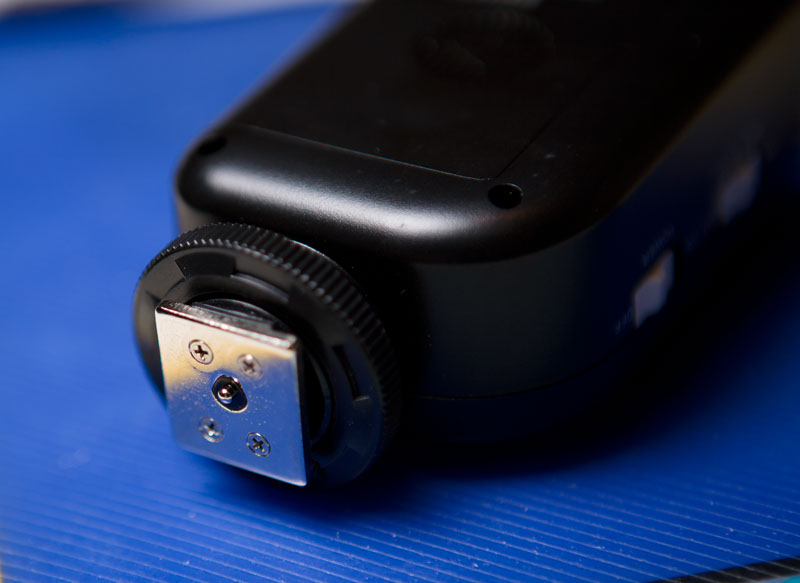
The second alternative of triggering is the use of the sync port by using a short cable. The cable is supplied and is, like all the supplied accessories, of suprisingly high quality. You’ll find a screw on the outer part of the pc-sync-port side of the cable, which allows you to attach it securely to a thread in the socket. My Canon cameras got this thread but till then I’d have never had/seen a fitting cable.
Receiver
Used as receiver 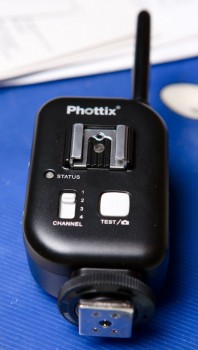 the Atlas are equaly versatile at least. The classic way, as you also know it from PW, is the cable connection. A cable with 3.5mm plug (on both ends) and a good quality adapter to 6.3mm are supplied. You could also use the pc-sync-cable I already spoke of if you got flashes with such a port (my Canon 580 EXII for exmple got such a connector).
the Atlas are equaly versatile at least. The classic way, as you also know it from PW, is the cable connection. A cable with 3.5mm plug (on both ends) and a good quality adapter to 6.3mm are supplied. You could also use the pc-sync-cable I already spoke of if you got flashes with such a port (my Canon 580 EXII for exmple got such a connector).
Here’s the end of the similarities with the big role model, as the Atlas exceed the plus II in the following. To the contrary of the PWs the Phottix got a metal hot shoe on their „back“. (So the Atlas can carry weight on his back, as did his greek role model! How metaphorical suiting!)
And THAT’S an improvement! With this you can use EVERY flashgun directly on the radio trigger, without any need of an adapter. This also makes handling much easier. The 580EX II with it’s rubberized socket-sealing does fit quite good to this hot shoe also. This may be a detail, butit does not go without saying as you could only get it on the PocketWizard FlexTT5(*german article) with force.
To get the trigger with the hot shoe-mounted flash on a lightstand properly there’s a tripod mount on the other side (which also is made of metal).
Here’s part 2.



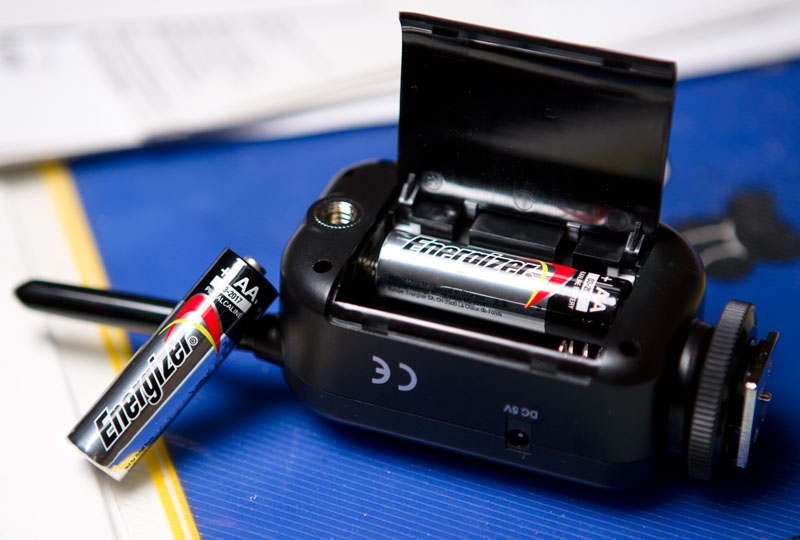
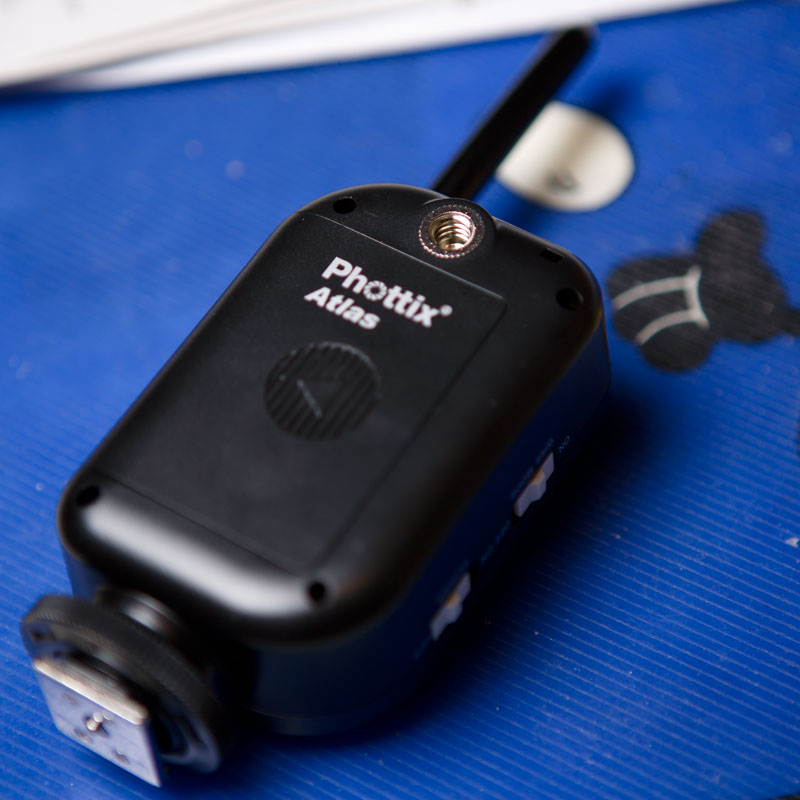
phottix atlas compatible with the Pocketwizard plus II ? is that true?
I mean for example:
PW II as transmitter
Atlas as Receiver
As stated in the review.
Pingback: Review: Phottix Atlas (part 2)